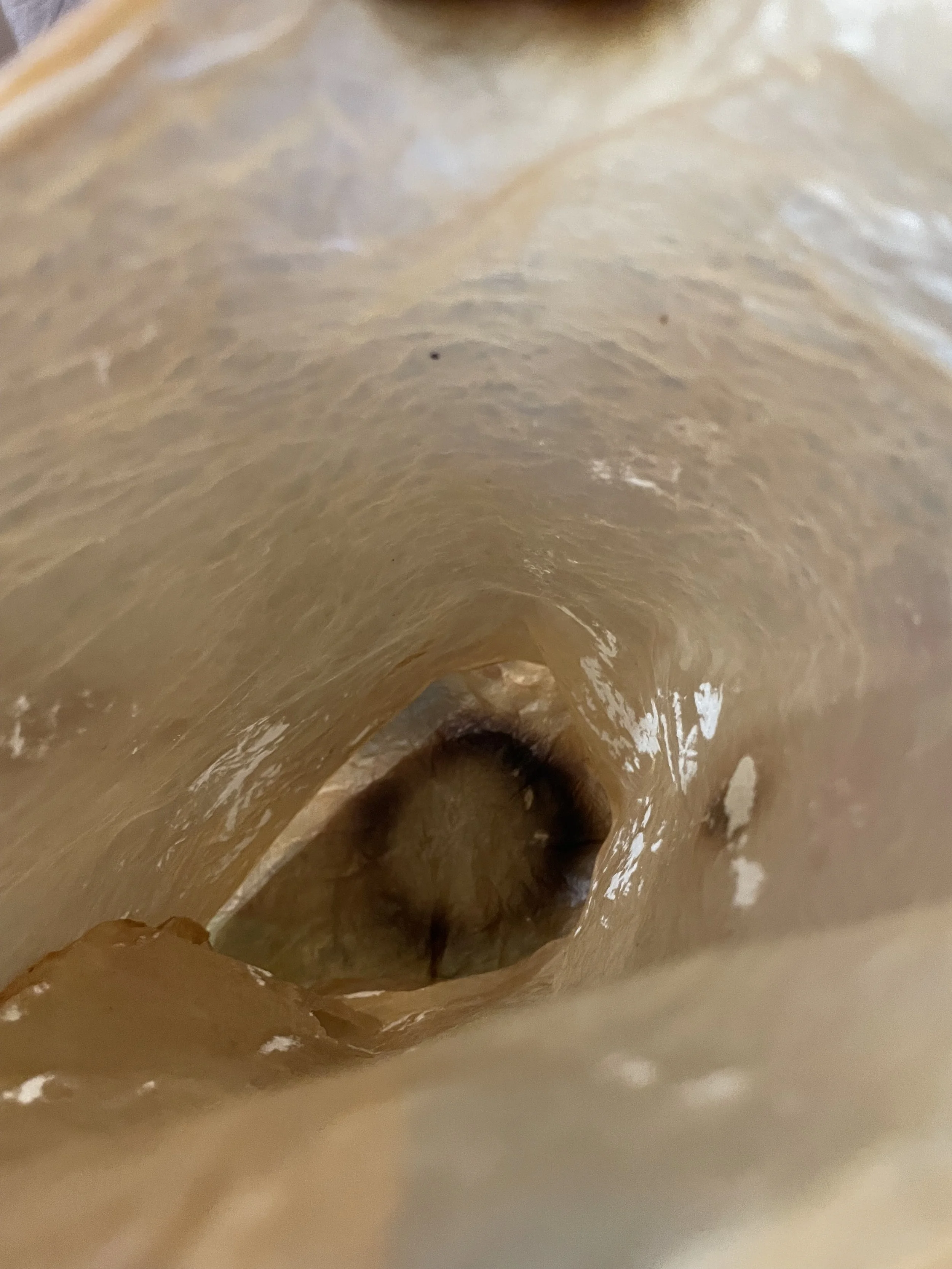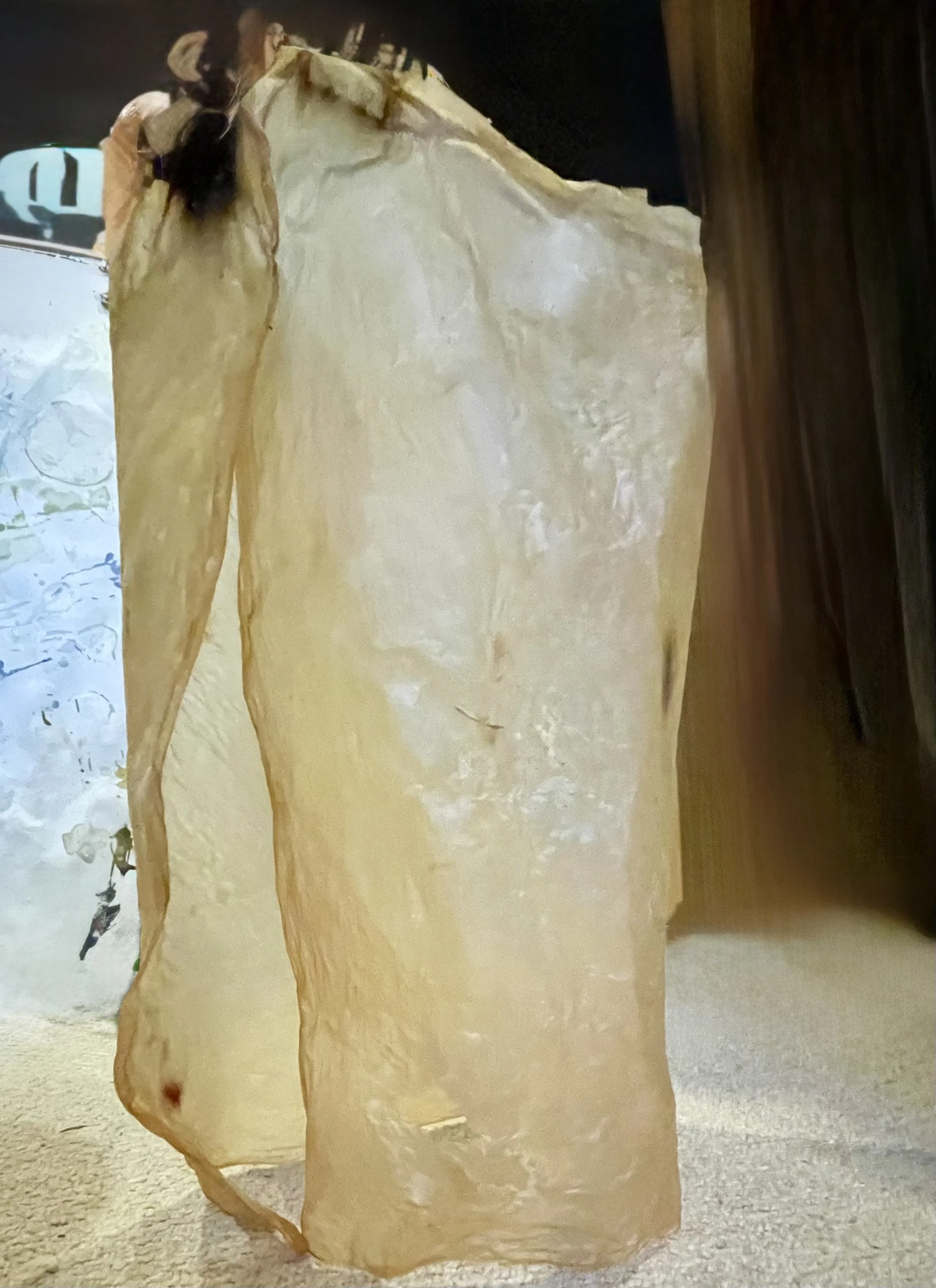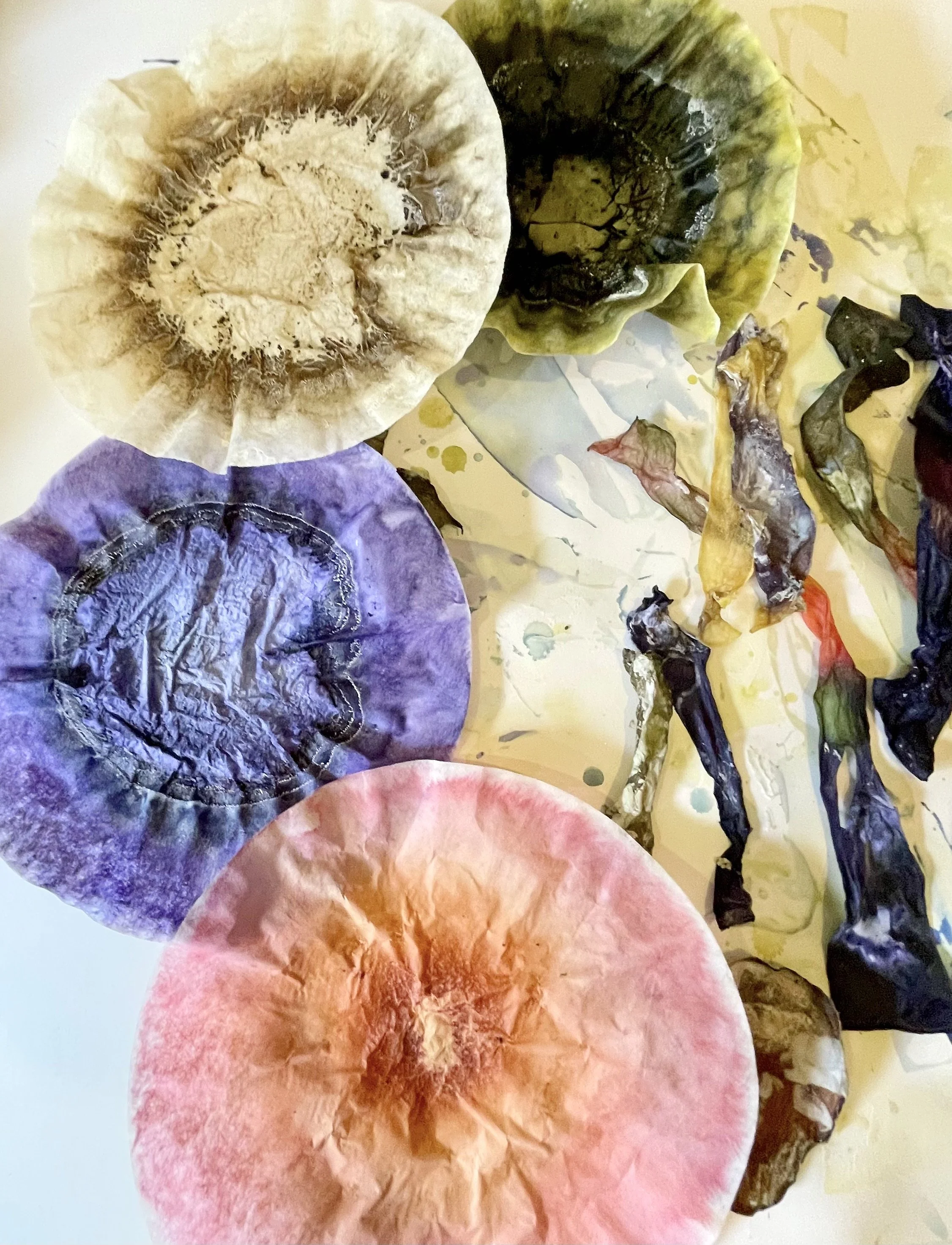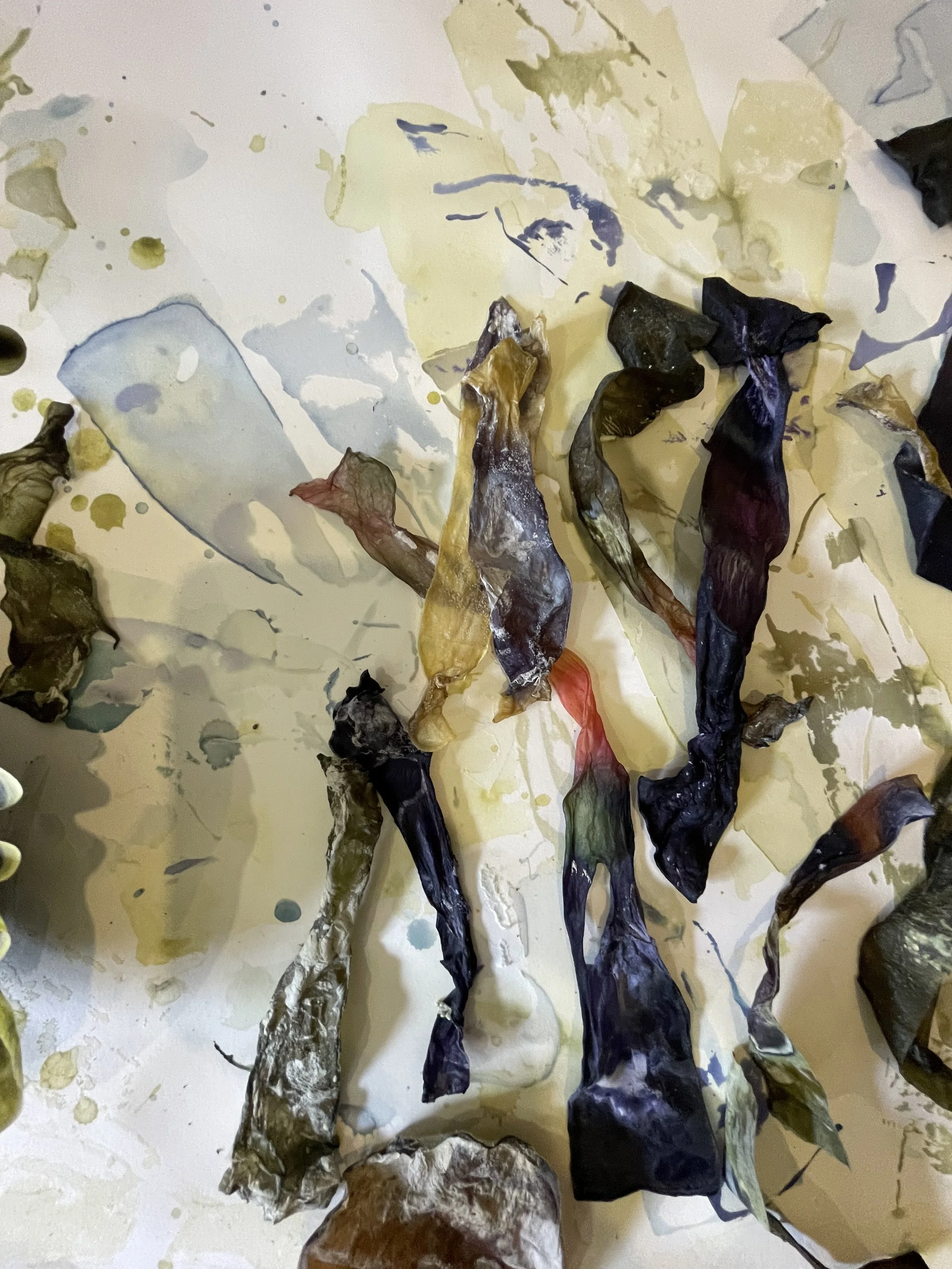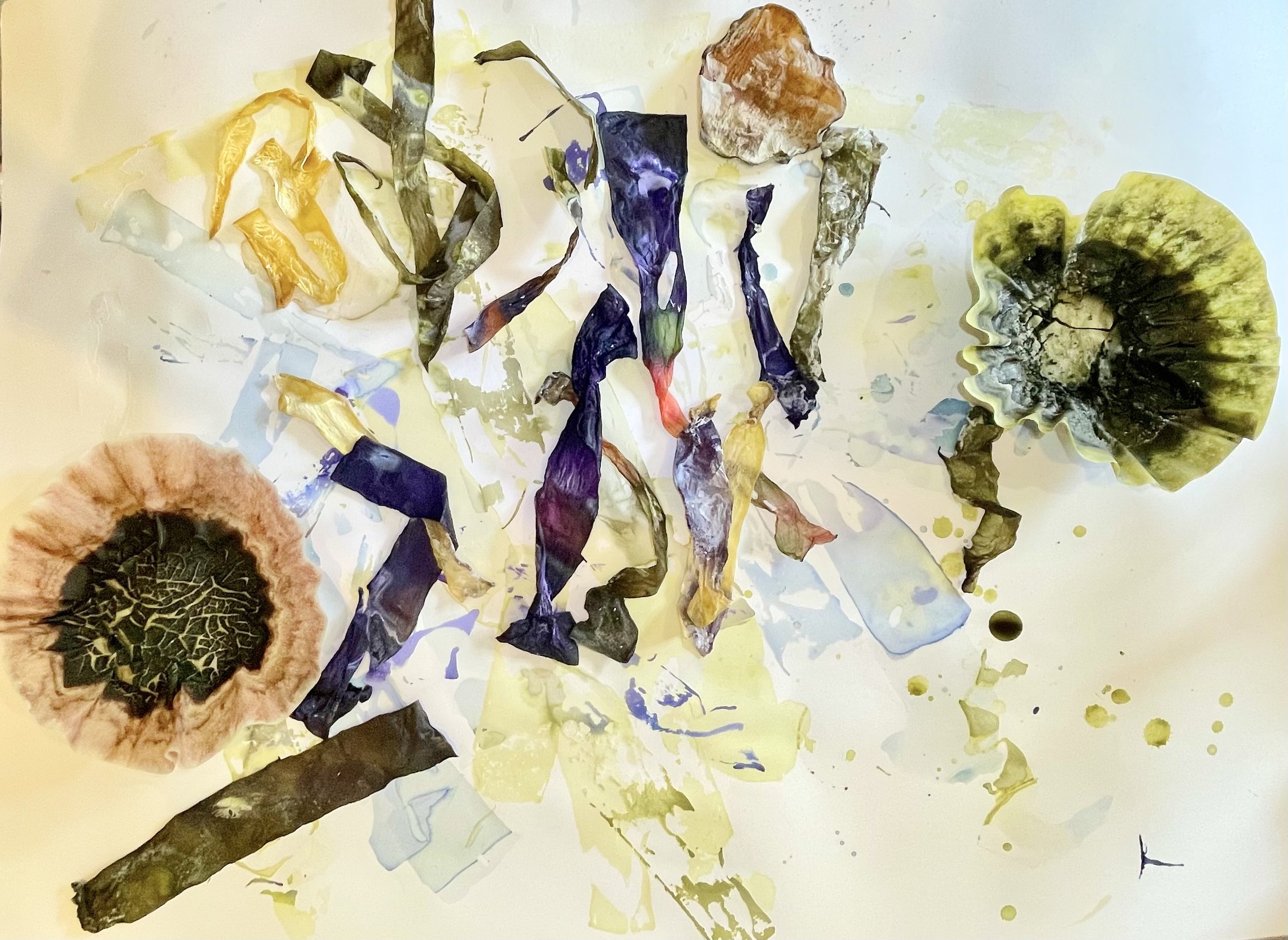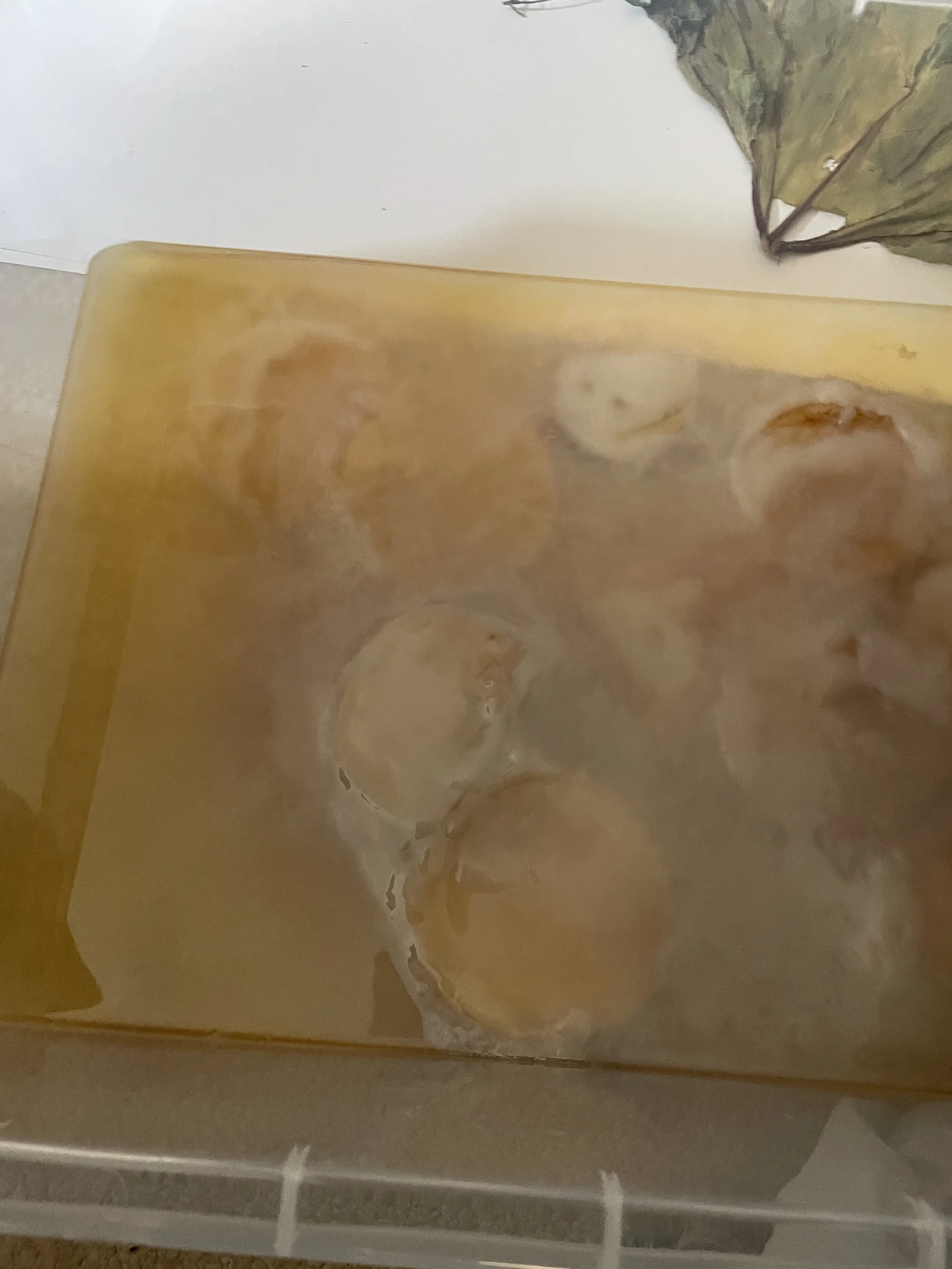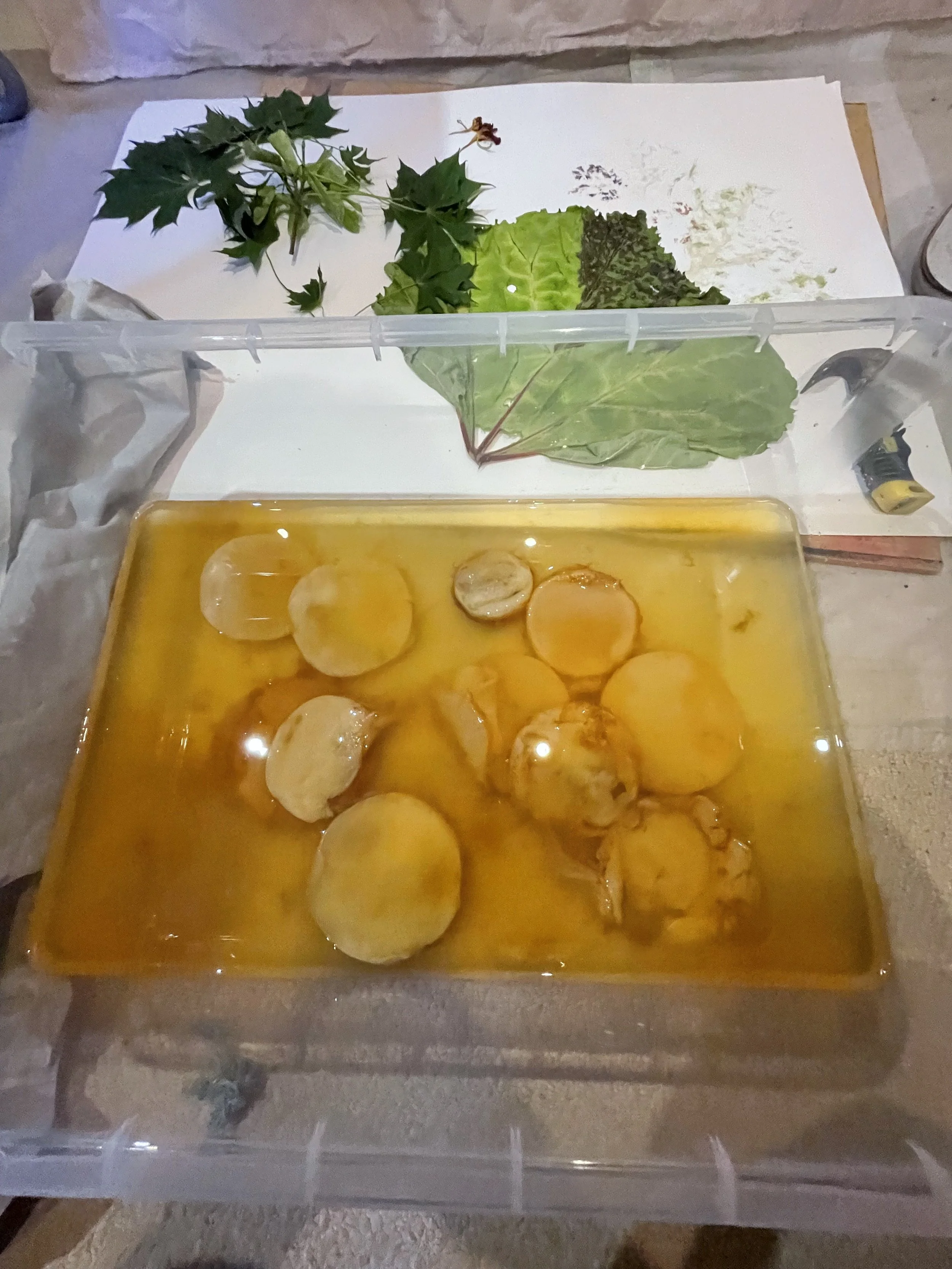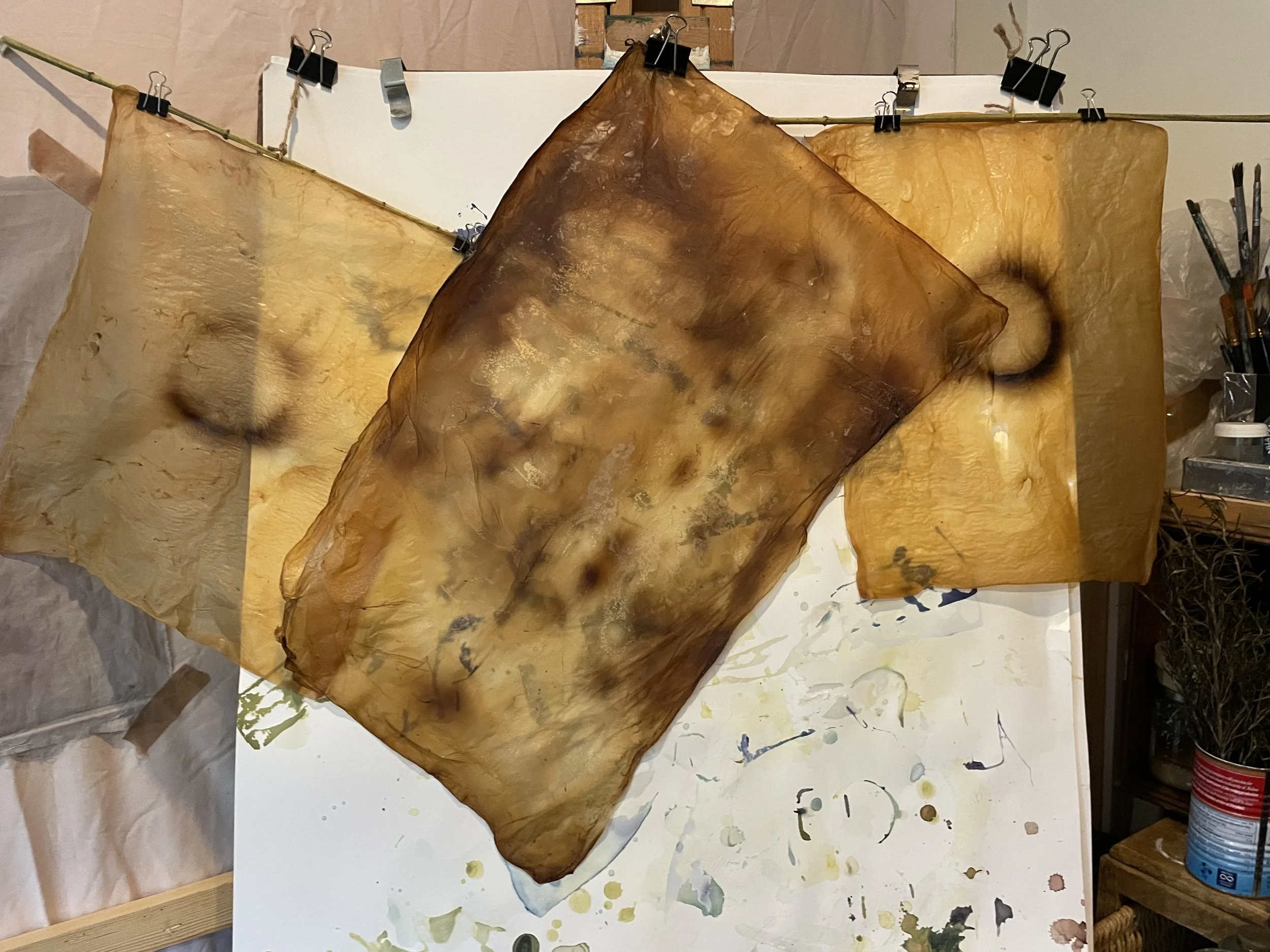
The Use of Kombucha Scoby as a Sculptural and Surface Material
Kombucha scoby (Symbiotic Culture of Bacteria and Yeast) is an organic material cultivated through the fermentation of tea and sugar. This natural process results in a dense, leather-like substance that grows over time, forming translucent layers that resemble biological membranes or delicate skins. As the scoby matures, it can be harvested, dried, and shaped, offering a sustainable and biodegradable alternative to synthetic materials.
The decision to use kombucha scoby in my sculptural practice is rooted in a desire to engage with materials that reflect cycles of growth, decay, and renewal. The organic nature of the scoby aligns with the themes of impermanence and environmental consciousness that run through my work. By foraging, fermenting, and crafting with materials directly from nature, I emphasize the interconnectedness between human creativity and the ecosystems we inhabit
In this project, the scoby will serve as both a surface material and a structural element. Layers of dried scoby will be stitched, fused, or molded into organic forms that evoke skins, cocoons, or second layers of protection. The texture and translucency of the material invite viewers to explore its tactile qualities, encouraging a deeper reflection on the passage of time and the transformation of materials.
To enhance the durability of the installation for outdoor settings, the scoby will be cultivated to a higher density. This thicker composition not only allows the material to withstand prolonged exposure to the elements but also introduces a robustness that contrasts with its inherent ephemerality. As the piece gradually weathers and decomposes, it will return harmlessly to the earth, reinforcing the project's commitment to zero environmental impact.
The use of kombucha scoby in public art installations represents an innovative step towards rethinking the boundaries of sculpture and materiality. It celebrates the beauty found in transient, living materials and challenges traditional notions of permanence in art. Through this process, the work becomes a dialogue between the artist, the environment, and the viewer—a shared reflection on how we relate to the materials that shape our world.
the Scoby Making Process
this was the start of my experiments I have since grown these much larger and will post them when they are ready


